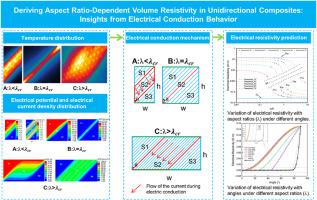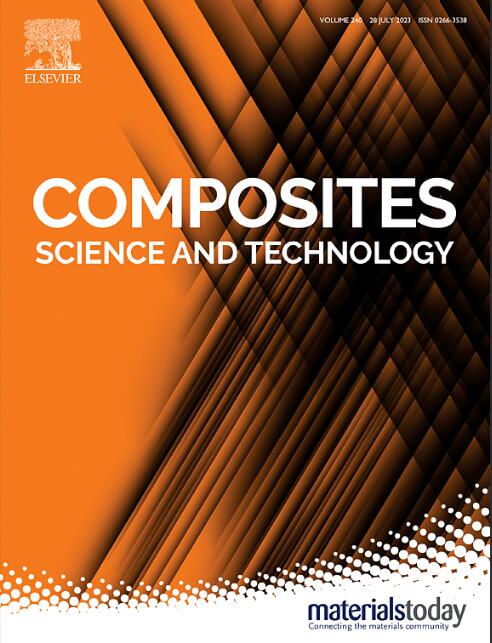Aspect ratio-dependent volume resistivity in unidirectional composites: Insights from electrical conduction behavior
IF 9.8
1区 材料科学
Q1 MATERIALS SCIENCE, COMPOSITES
引用次数: 0
Abstract
The electrical properties of carbon fibers serve as the foundation for the multifunctional applications of carbon fiber-reinforced composite structures. In scenarios that exploit the electrical characteristics of materials, accurate estimation of electrical resistivity stands as a critical factor. This study endeavors to elucidate the electrical conduction behaviors in unidirectional composites with different fiber orientation angles (0°, 15°, 30°, 45°, 60°, 75°, and 90°) and aspect ratios, thereby deriving the volume resistivity within an arbitrary Cartesian coordinate system. Employing thermal infrared imaging technology and finite element analysis, we identified distinctive electrical conduction behaviors associated with aspect ratios in carbon fiber composite plates. Notably, a critical aspect ratio exists wherein the diagonal yarn is the only conductive path between two electrodes. Below this critical threshold, no direct conductive path exists, and current flows through the shortest distance between parallel yarns. Conversely, beyond the critical aspect ratio value, multiple yarns form conductive paths between the two electrodes. Based on the electrical conduction behavior of unidirectional composites under different angles and aspect ratios, the volume resistivity with finite boundaries was derived and examined under an arbitrary Cartesian coordinate basis.

单向复合材料中与长宽比相关的体积电阻率:从电传导行为中获得的启示
碳纤维的电特性是碳纤维增强复合材料结构多功能应用的基础。在利用材料电气特性的应用场景中,准确估算电阻率是一个关键因素。本研究致力于阐明不同纤维取向角(0°、15°、30°、45°、60°、75°和 90°)和长宽比的单向复合材料的导电行为,从而推导出任意直角坐标系中的体积电阻率。利用热红外成像技术和有限元分析,我们确定了碳纤维复合板中与纵横比相关的独特电导行为。值得注意的是,在对角线纱线是两个电极之间唯一导电路径的情况下,存在一个临界纵横比。在此临界值以下,不存在直接导电路径,电流流经平行纱线之间的最短距离。相反,超过临界纵横比值时,多根纱线会在两个电极之间形成导电路径。根据单向复合材料在不同角度和纵横比下的导电行为,推导出了有限边界的体积电阻率,并在任意笛卡尔坐标基础上对其进行了研究。
本文章由计算机程序翻译,如有差异,请以英文原文为准。
求助全文
约1分钟内获得全文
求助全文
来源期刊

Composites Science and Technology
工程技术-材料科学:复合
CiteScore
16.20
自引率
9.90%
发文量
611
审稿时长
33 days
期刊介绍:
Composites Science and Technology publishes refereed original articles on the fundamental and applied science of engineering composites. The focus of this journal is on polymeric matrix composites with reinforcements/fillers ranging from nano- to macro-scale. CSTE encourages manuscripts reporting unique, innovative contributions to the physics, chemistry, materials science and applied mechanics aspects of advanced composites.
Besides traditional fiber reinforced composites, novel composites with significant potential for engineering applications are encouraged.
 求助内容:
求助内容: 应助结果提醒方式:
应助结果提醒方式:


